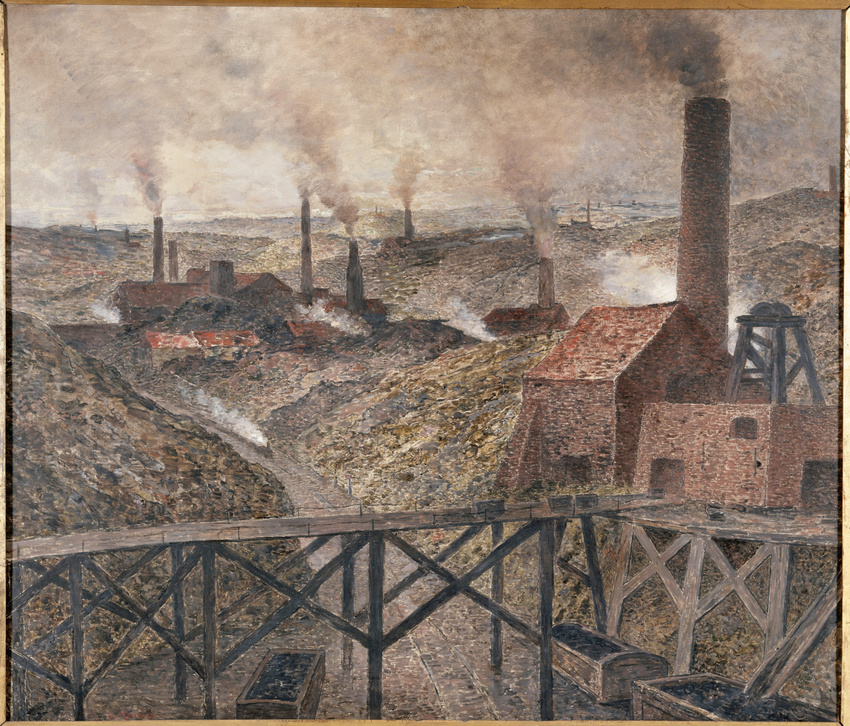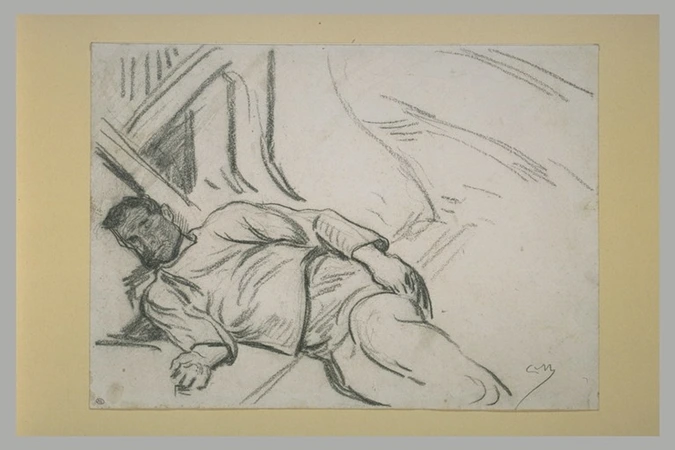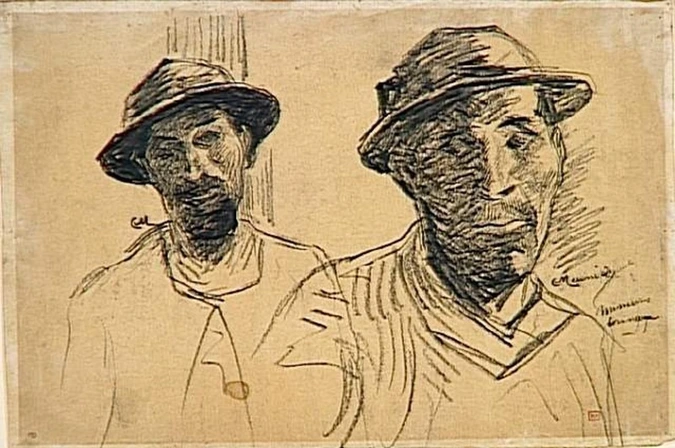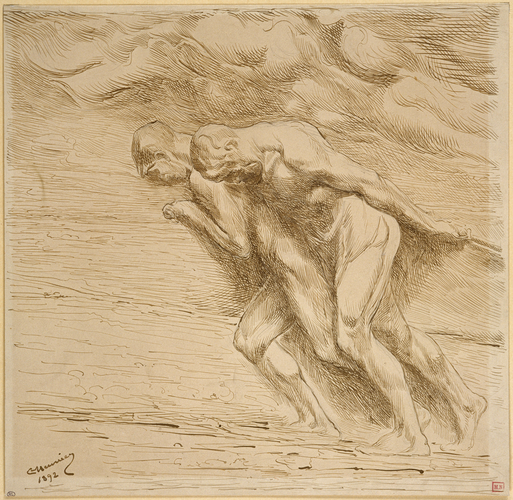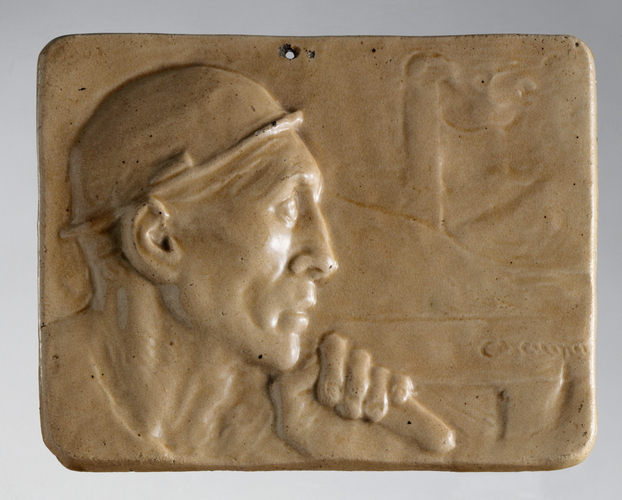Au pays noir
The title of the painting, In the Black Country,refers to the name popularly given to the Borinage, a region in the Hainault, to the west of Mons in Belgium. In the 19th century, this area was transformed by the exploitation of coal deposits, the setting up of factories and miner's cottages - whole towns built for the population working in the mines.
The effect produced is one of a striking sadness. The tall chimneys, dotted about the devastated countryside, throw out thick, black plumes of smoke into a dark sky. The dark mounds of the slag heaps rise up - mud-coloured shapes on the horizon. No figure animates the implacable solitude of this plain, bristling with industrial, redbrick buildings.
To depict this unrelenting, terrible yet fascinating landscape, Meunier chose a high viewpoint enabling him to see across a wide area. The composition is based on two intersecting diagonal lines: the transverse line created by the wooden viaduct, and the cutting between two slag heaps, from which a train is emerging. This triangular layout is repeated in the alignment of the hills.
Colour is applied in broken, fragmented brush strokes, following Neo-Impressionist principles. The artist's palette consists of browns mixed with black or with yellow to create a range of earthy tones, livened up by the red of the brick.
In 1896, Siegfried Bing put on a one-man exhibition of Meunier's work in his gallery "L'Art Nouveau". It brought together a collection of bronzes, plastercasts, watercolours, pastels and drawings, and four paintings including this one. The press praised it, pointing out how these paintings provided a strange and unusual setting for his moving sculptures of miners.
